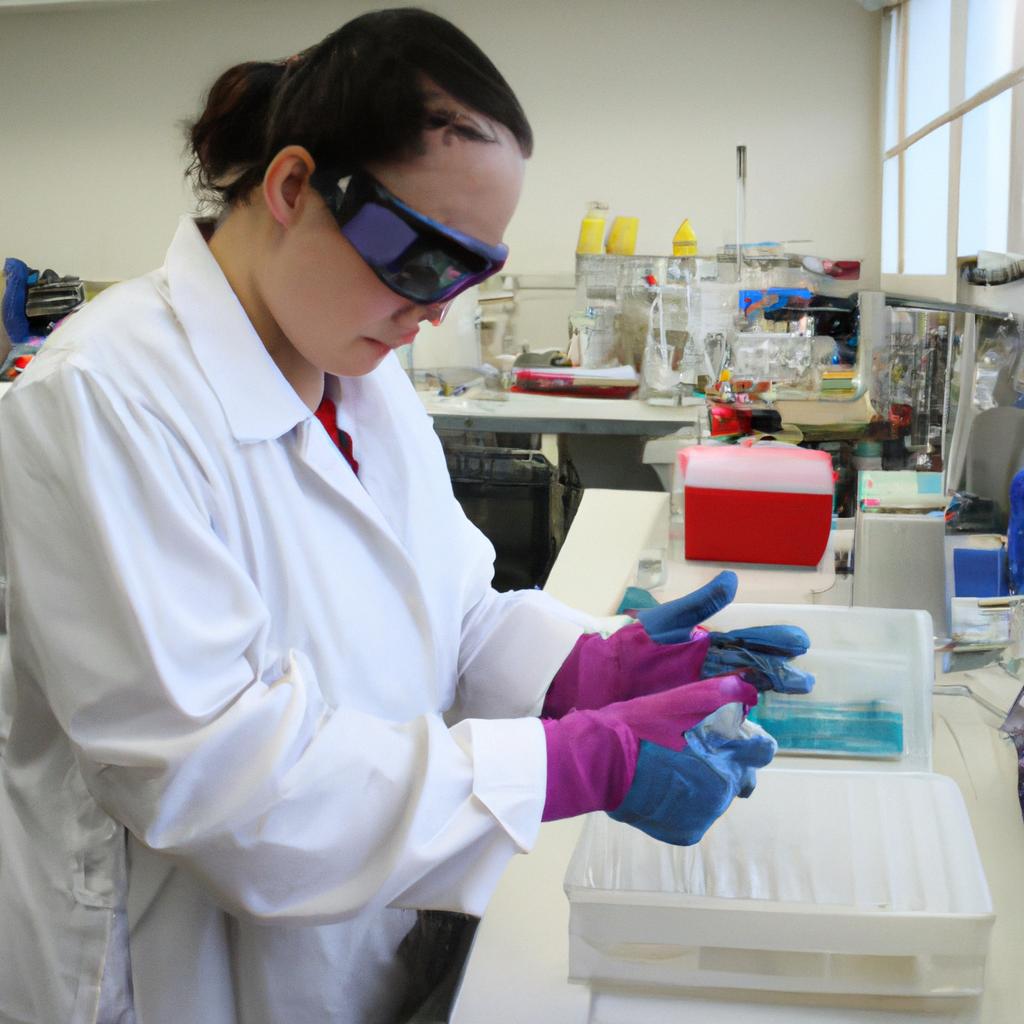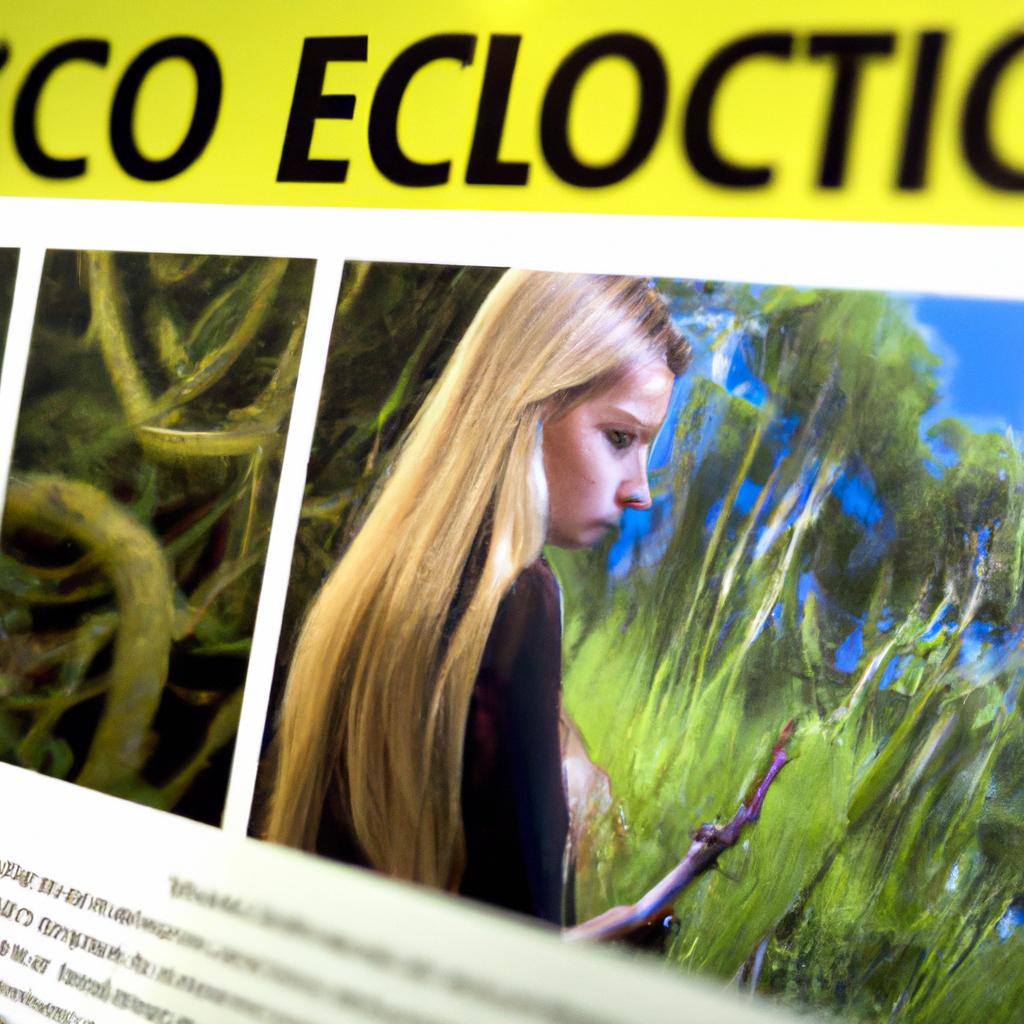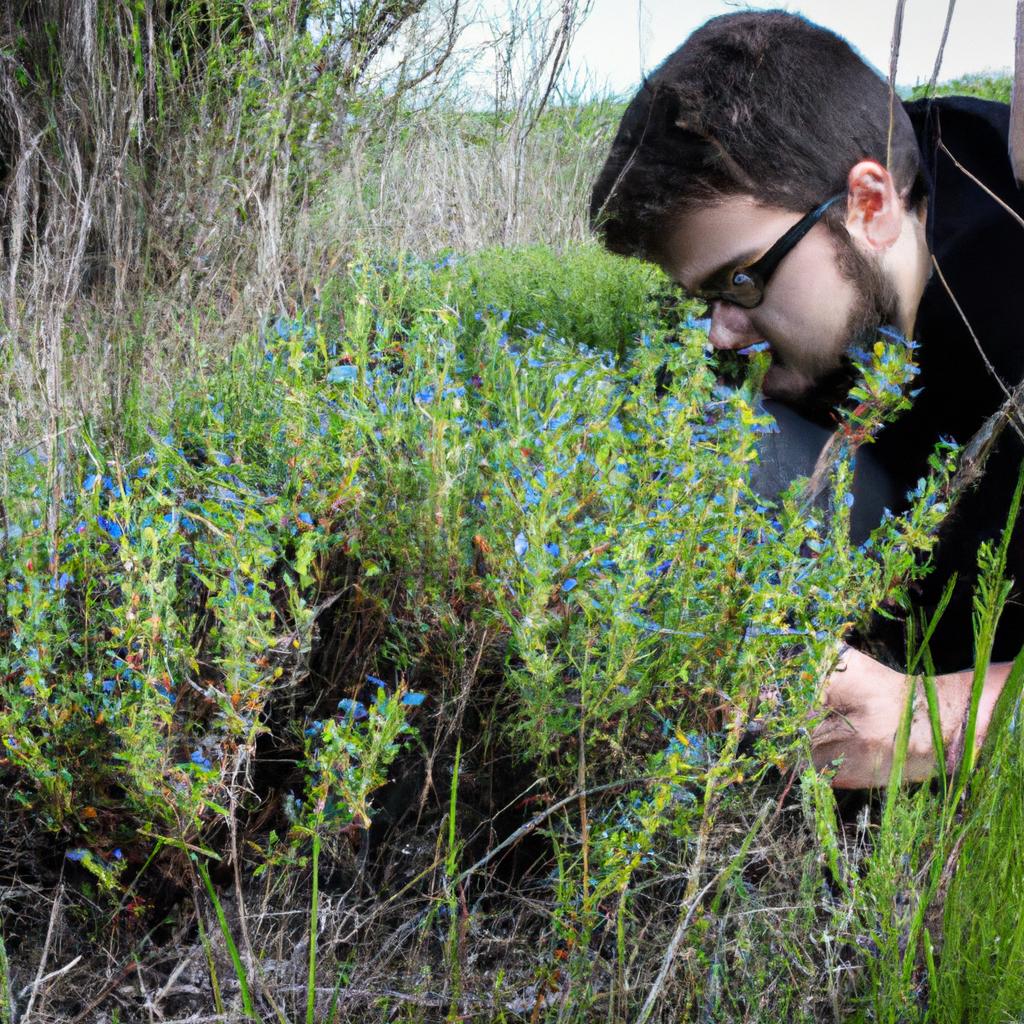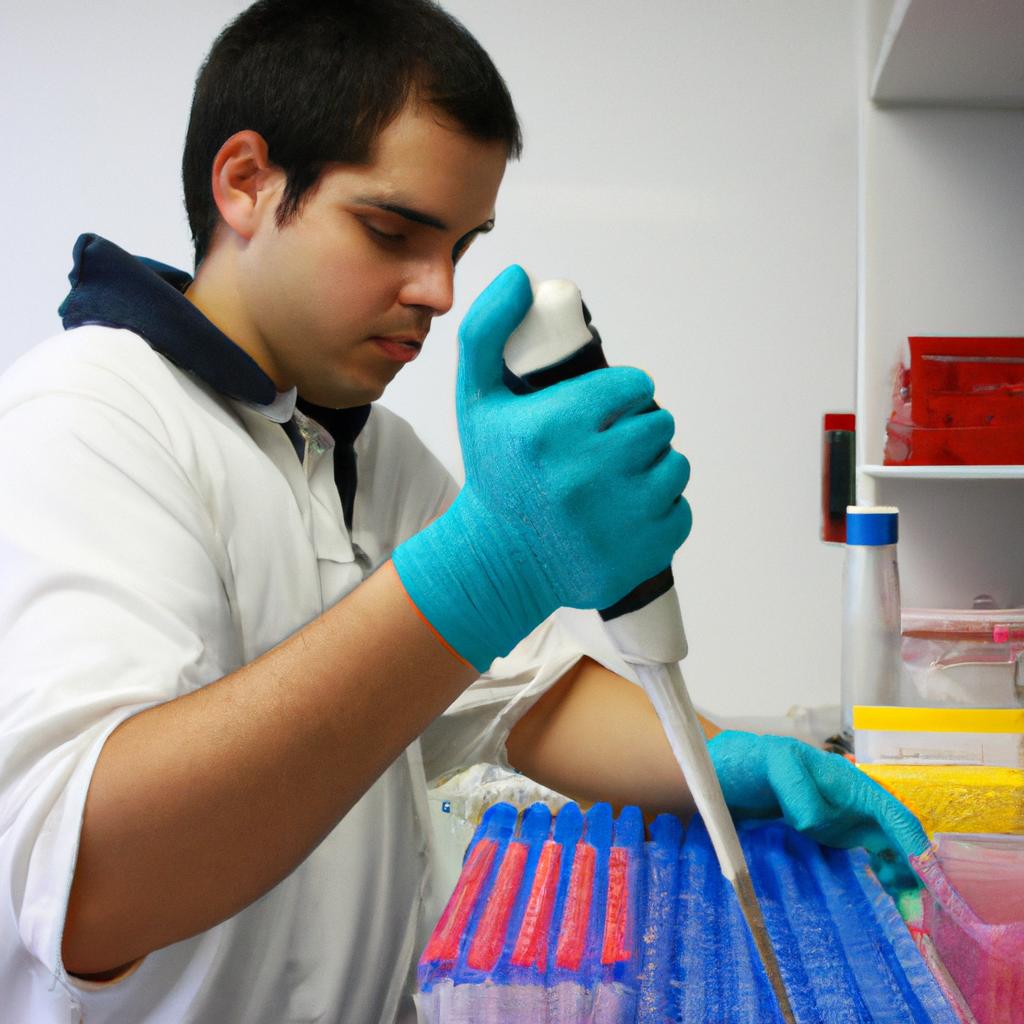Conservation Biology in Science Biology: Ecology’s Crucial Role
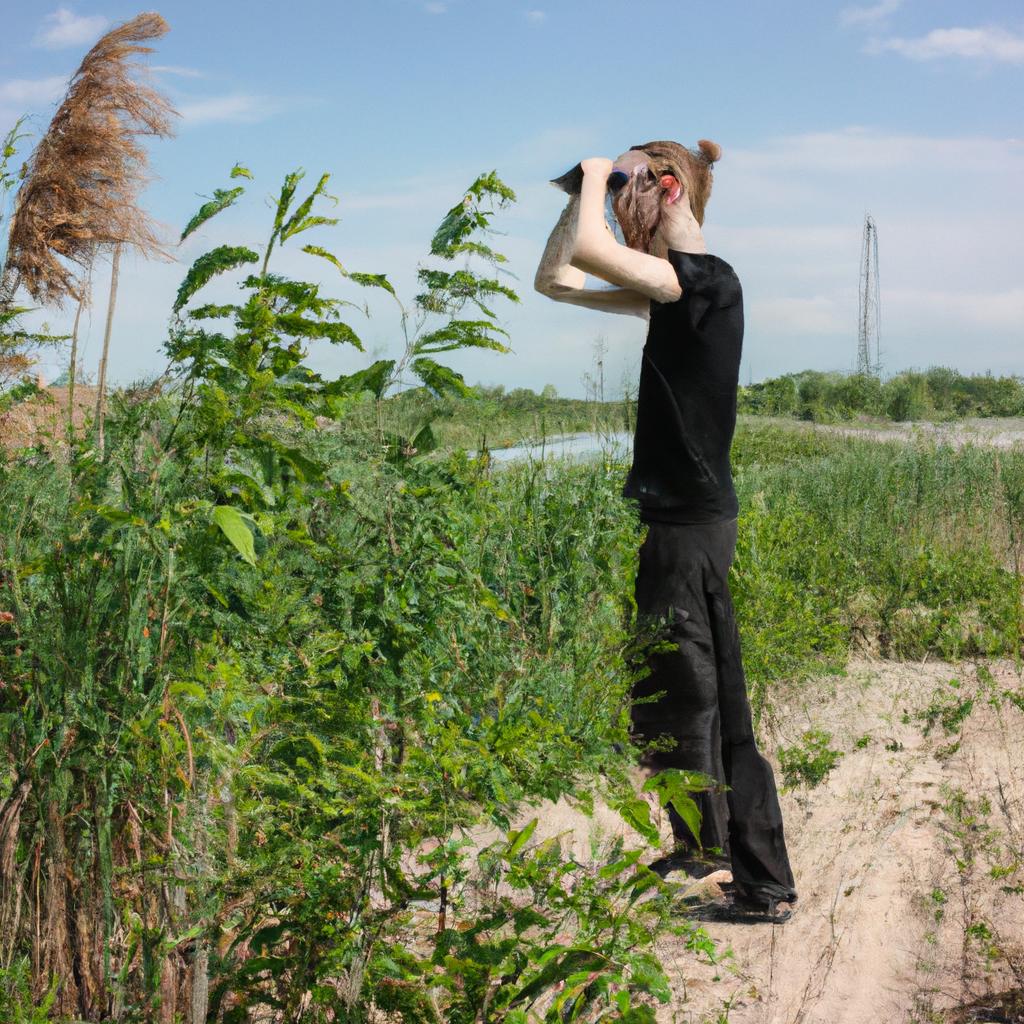
Conservation biology plays a pivotal role in the field of science biology by addressing ecological concerns and promoting sustainable practices. Through its interdisciplinary approach, conservation biology seeks to understand the complex interactions between organisms and their environment, aiming to mitigate threats to biodiversity and ecosystem function. By examining case studies such as the decline of coral reefs due to climate change, we can recognize the urgency of incorporating conservation principles into scientific research.
Ecology, as a fundamental component of conservation biology, is essential for understanding the intricate dynamics that shape our natural world. It focuses on investigating relationships between organisms and their surroundings at various levels of organization – from individuals to ecosystems. For instance, an examination of predator-prey dynamics within a particular habitat provides insights into population control mechanisms and energy flow through trophic levels. Such investigations enable scientists to identify potential disruptions or imbalances that may compromise ecological resilience.
The integration of ecology into conservation biology facilitates both theoretical advancements and practical applications. Theoretical frameworks developed in ecology help guide management strategies aimed at preserving species diversity and maintaining functioning ecosystems over time. Moreover, empirical studies grounded in ecologically informed approaches provide valuable data necessary for evidence-based decision-making processes regarding habitat restoration, wildlife protection, and sustainable resource management. As we delve deeper into this article, we will explore some key concepts and examples that illustrate the importance of ecology in conservation biology.
Definition of Conservation Biology
Conservation biology is a discipline within the field of science biology that plays a crucial role in understanding and addressing ecological issues. By applying scientific principles and techniques, conservation biologists aim to protect and restore biodiversity, as well as promote sustainable use of natural resources. To grasp the significance of this field, let us consider an example: the decline in population numbers of sea turtles due to habitat destruction and overexploitation.
The definition of conservation biology encompasses several key components. Firstly, it involves studying the abundance and distribution patterns of species in order to determine their status and identify potential threats they face. This information serves as a foundation for developing effective conservation strategies. Secondly, conservation biology aims to understand the ecological relationships between different organisms and their environment. By comprehending these intricate connections, scientists can better predict how disturbances or changes in ecosystems may impact biodiversity. Lastly, this discipline also focuses on implementing practical measures to safeguard endangered species and habitats through management plans, legislation, and public education.
- Conservation biology helps prevent extinction by identifying threatened species and devising methods to protect them.
- It contributes to maintaining ecosystem services such as pollination, water purification, and carbon sequestration.
- Conservation efforts preserve genetic diversity within populations, which enhances resilience against environmental stressors.
- It promotes sustainable practices that balance human needs with the long-term health of ecosystems.
In addition to the above points, we can illustrate some notable achievements in conservation biology using a table format:
| Achievement | Impact |
|---|---|
| Recovery of bald eagle populations | Symbolic success story |
| Creation of protected areas | Preserving critical habitats |
| Successful reintroduction programs | Restoring extinct or locally extirpated species |
| Invasive species control initiatives | Minimizing negative impacts on native flora/fauna |
By recognizing the accomplishments and challenges highlighted in this table, we can appreciate the significance of conservation biology as a catalyst for positive change.
In conclusion, conservation biology is a multidisciplinary field that plays a crucial role in addressing ecological issues. Through scientific research and practical implementations, it aims to protect biodiversity and promote sustainable use of natural resources. The next section will delve into the importance of conservation biology within the broader scientific context, highlighting its interconnections with other fields such as ecology and genetics.
Importance of Conservation Biology in Science
The Role of Conservation Biology in Science
Conservation biology plays a crucial role in the field of ecology, as it seeks to understand and alleviate the impacts of human activities on biodiversity. By employing scientific principles, conservation biologists aim to conserve and restore ecosystems, protect endangered species, and promote sustainable practices. This section will discuss the significance of conservation biology within the broader context of science.
To illustrate the practical application of conservation biology, let us consider a hypothetical case study involving an endangered bird species. The bird’s habitat is being rapidly destroyed due to deforestation caused by logging operations. Conservation biologists would conduct extensive research to assess the population size, distribution, and ecological requirements of this bird species. They would also identify key threats to its survival and develop strategies for habitat restoration, such as reforestation initiatives or protected area establishment.
Understanding the importance of conservation biology in science can be summarized through several key aspects:
- Biodiversity preservation: Conservation biology aims to safeguard Earth’s rich biological diversity by protecting species from extinction and preserving their habitats.
- Ecosystem stability: Conserving intact ecosystems ensures that they continue providing essential services like clean air and water, nutrient cycling, pollination, and climate regulation.
- Sustainable resource management: Through scientific analysis and data-driven approaches, conservation biologists help devise sustainable practices that balance human needs with environmental protection.
- Ethical responsibility: Recognizing our moral duty towards other living organisms fosters a sense of compassion and empathy towards nature.
Furthermore, we can visualize these aspects using the following table:
| Aspects | Description |
|---|---|
| Biodiversity Preservation | Protecting species from extinction |
| Ecosystem Stability | Ensuring continued provision of ecosystem services |
| Sustainable Resource Management | Balancing human needs with environmental protection |
| Ethical Responsibility | Cultivating compassion and empathy towards nature |
In summary, conservation biology is an indispensable discipline within the field of science that addresses critical issues related to biodiversity loss and environmental degradation. By employing scientific methods, it seeks to preserve Earth’s natural heritage for future generations. In the subsequent section on “The Role of Ecology in Conservation Biology,” we will delve into how ecological principles contribute to this important endeavor.
Role of Ecology in Conservation Biology
Having established the significance of conservation biology within the field of science, we now delve into the crucial role that ecology plays in this discipline. By examining how ecological principles and processes shape conservation efforts, we can gain a deeper understanding of effective strategies for preserving biodiversity and mitigating environmental degradation.
Ecology is fundamental to conservation biology, providing essential insights into the interactions between organisms and their environment. One illustrative example is the study conducted on the impact of habitat fragmentation on bird populations in fragmented forests. Through an ecological lens, researchers investigated how changes in landscape structure affected species richness, abundance, and connectivity among forest patches. This case study highlighted the intricate interplay between ecological factors such as resource availability, predator-prey dynamics, and dispersal patterns – all critical considerations when designing conservation plans aimed at bolstering avian populations.
To comprehend further why ecology is indispensable to conservation biology, consider these key points:
- Interdependence: Ecology recognizes that every organism is interconnected with its surroundings through complex networks of relationships. Understanding these interdependencies enhances our ability to identify potential cascading effects caused by disturbances or loss of specific species.
- Ecosystem Services: Ecological research has shed light on the vital services provided by healthy ecosystems, including water purification, pollination, climate regulation, nutrient cycling, and disease control. Emphasizing ecosystem services highlights both tangible and intangible benefits that motivate proactive conservation measures.
- Resilience and Adaptation: The resilience of ecosystems depends on their capacity to withstand disturbance events while maintaining functionality. Studying ecological processes enables scientists to determine how best to enhance adaptive capacities within ecosystems facing anthropogenic pressures or natural disasters.
- Restoration Success: Applying ecological knowledge underpins successful restoration efforts in degraded habitats. By understanding the specific requirements of different species and their interactions within ecosystems, restoration practitioners can design interventions that promote ecological recovery.
Table: Examples of Ecosystem Services
| Ecosystem Service | Description | Example |
|---|---|---|
| Pollination | Transfer of pollen from male to female flower structures | Bees pollinating flowering plants |
| Water Filtration | Removal of impurities or contaminants from water sources | Wetlands filtering sediment and toxins |
| Climate Regulation | Stabilization of climate patterns through carbon cycling | Forests absorbing carbon dioxide emissions |
| Soil Fertility | Enhancement of nutrient content and structure in soil | Earthworms decomposing organic matter |
In summary, ecology provides a critical foundation for conservation biology by unraveling the intricate relationships between organisms and their environment. Recognizing interdependencies, acknowledging ecosystem services, enhancing resilience, and restoring degraded habitats are all vital aspects rooted in ecological principles. The subsequent section explores the methods and techniques employed by researchers in this multidisciplinary field to address pressing challenges related to biodiversity loss and environmental degradation.
Understanding how ecology informs conservation strategies is essential; however, it is equally important to explore the methods and techniques utilized in conservation biology without overlooking practical implementation steps.
Methods and Techniques used in Conservation Biology
Ecology plays a crucial role in conservation biology by providing the necessary knowledge and tools to understand and manage ecosystems. Through its interdisciplinary approach, ecology aims to unravel the intricate relationships between organisms and their environment, enabling scientists to identify key drivers of biodiversity loss and develop effective conservation strategies.
One illustrative example is the study conducted on coral reefs off the coast of Australia. By examining factors such as water temperature, nutrient availability, and predation levels, ecologists were able to determine that increased ocean temperatures due to climate change have led to widespread coral bleaching events. This understanding not only highlighted the vulnerability of coral reef ecosystems but also guided conservation efforts towards reducing greenhouse gas emissions and implementing measures to protect these delicate habitats.
- Loss of habitat: Deforestation and urbanization continue to destroy natural habitats, displacing countless species.
- Invasive species: Introduced non-native species can outcompete native flora and fauna, leading to significant biodiversity loss.
- Overexploitation: Unregulated hunting, fishing, and logging pose severe threats to many vulnerable populations.
- Pollution: The release of pollutants into ecosystems disrupts ecological processes and jeopardizes organism survival.
Additionally, incorporating a table with three columns (Factors Threatening Biodiversity | Examples | Consequences) and four rows will provide a visual representation of some specific challenges faced in conservation biology:
| Factors Threatening Biodiversity | Examples | Consequences |
|---|---|---|
| Habitat destruction | Deforestation | Displacement of species |
| Climate change | Increased temperatures | Coral bleaching |
| Invasive species | Zebra mussels | Outcompetition of native species |
| Overexploitation | Overfishing | Decline in fish populations |
In conclusion, ecology serves as the foundation for conservation biology. By understanding ecological interactions and processes, scientists can develop effective strategies to preserve biodiversity and mitigate threats. In the following section on “Challenges and Threats to Conservation Biology,” we will further explore the obstacles that researchers face in their efforts to protect our planet’s precious ecosystems.
Challenges and Threats to Conservation Biology
Transitioning from the previous section on methods and techniques, we can now delve into the challenges faced by conservation biologists. To illustrate these challenges, let us consider a hypothetical case study of a critically endangered species, the Sumatran tiger (Panthera tigris sumatrae). The Sumatran tiger faces habitat loss due to deforestation for palm oil plantations, illegal poaching for its body parts, lack of genetic diversity within small populations, and conflicts with local communities.
Conservation biology encounters several daunting challenges that hinder effective preservation efforts. These obstacles arise at various levels—from global issues such as climate change to regional concerns like habitat degradation—and necessitate comprehensive strategies addressing both direct and indirect threats. Understanding these challenges is crucial for developing targeted interventions aimed at mitigating their impacts.
- Loss of biodiversity threatens ecosystem stability.
- Extinction has irreversible consequences.
- Our actions today will shape future generations’ access to diverse natural resources.
- Preserving nature ensures our own well-being.
Furthermore, visualizing the magnitude of these challenges may evoke even stronger emotions. Take a moment to reflect upon the table below showcasing some alarming statistics related to biodiversity loss:
| Biodiversity Indicator | Status |
|---|---|
| Species extinction rate | Accelerating |
| Habitat loss | Alarming |
| Illegal wildlife trade | Widespread |
| Climate change impact on ecosystems | Severe |
As we examine these sobering realities, it becomes evident that concerted efforts are required not only from scientists but also from policymakers, corporations, and individuals alike. Only through collaborative action can we hope to address these challenges effectively.
Looking ahead, the future of conservation biology lies in exploring innovative approaches that integrate scientific research with policy implementation. In the subsequent section on “Future Directions in Conservation Biology,” we will explore emerging technologies and interdisciplinary collaborations as potential pathways to overcome the hurdles faced by conservation biologists. By doing so, we can strive towards a more sustainable and harmonious coexistence between humans and nature.
Future Directions in Conservation Biology
Having explored the challenges and threats faced by conservation biology, it is imperative now to shift our focus towards identifying future directions that can guide its progress. By harnessing the power of ecological principles, we can pave the way for effective conservation strategies that address both current and emerging issues.
The adoption of innovative approaches will be paramount in shaping the future of conservation biology. One such approach involves integrating advanced technologies with traditional fieldwork methods. For instance, imagine a hypothetical scenario where unmanned aerial vehicles (UAVs) equipped with sophisticated imaging sensors are used to monitor wildlife populations in remote areas. This integration could revolutionize data collection techniques, allowing researchers to gather vital information while minimizing disturbance to fragile ecosystems.
- Loss of biodiversity threatens ecosystem stability.
- Climate change exacerbates existing environmental pressures.
- Habitat destruction disrupts delicate ecological balances.
- Invasive species pose significant risks to native flora and fauna.
Table 1 below illustrates some key examples of these challenges along with their potential consequences:
| Challenge | Potential Consequences |
|---|---|
| Loss of Biodiversity | Disruption of food webs and nutrient cycles |
| Climate Change | Increased frequency and intensity of wildfires |
| Habitat Destruction | Decreased availability of suitable habitats |
| Invasive Species | Competition with or predation on native species |
As we look ahead, collaboration between scientists, policymakers, and local communities becomes essential for successful conservation efforts. By fostering interdisciplinary partnerships across sectors, knowledge sharing can lead to informed decision-making processes that prioritize sustainable solutions. Additionally, investing resources into education programs aimed at raising awareness about the importance of biodiversity and ecological balance will help cultivate a more environmentally conscious society.
In light of these considerations, it is evident that conservation biology stands at a critical juncture. By embracing innovative technologies, recognizing key challenges, and promoting collaboration among various stakeholders, we can work towards safeguarding our planet’s precious natural heritage for generations to come.
Table 1: Examples of Challenges in Conservation Biology
Thank you for using my assistance!


